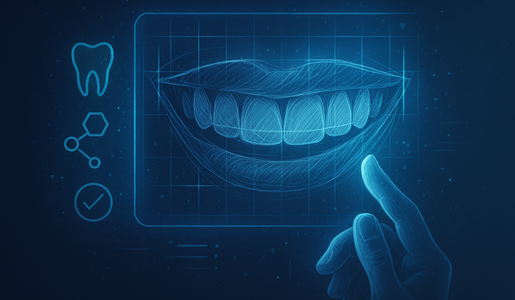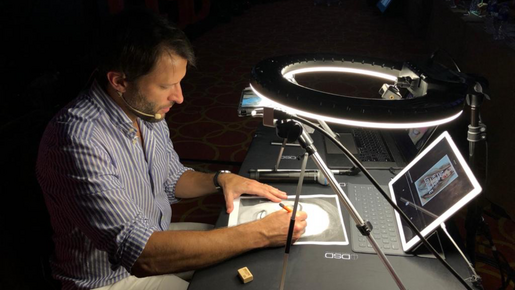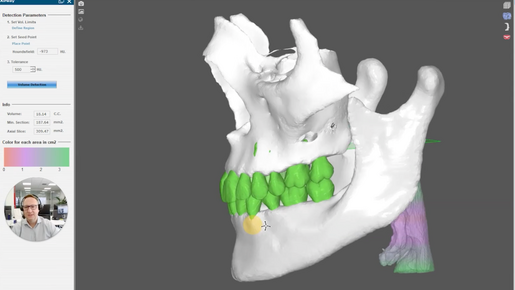
By Christian Coachman
⋅ 3 min read
⋅ Updated Sept, 2025
I know many colleagues feel both excited and uneasy about AI in dentistry. The tools look powerful — and they are. It’s amazing to see what 3D software and now AI can do in the smile design environment. From automated setups to natural morphologies, from beautiful augmented reality simulations to instant before-and-afters, the progress is impressive.
These tools are valuable, and as smile designers we need to learn how to use them and take advantage of what they offer. But no matter what technology is already doing — or what it will do in the near future — there are still parts of smile design that are 100% dependent on your know-how, your perception and your human skills.
These are ten areas where I believe AI and software can’t replace your skill as a smile designer.

Watch the full video on my Instagram channel here or see all ten areas below:
1. Evaluating and modifying a smile simulation
AI in smile design can suggest an initial digital proposal. But it can’t decide if that design truly works. The ability to evaluate, critique and modify a simulation to make it better depends entirely on your eye, your knowledge and your clinical experience.
2. Evaluating and modifying a diagnostic design
Diagnostic designs go deeper than smile simulations — they are facially driven and functional. You need to compare a proposed design against the patient’s existing condition, judge what makes sense and identify how to improve it. This critical evaluation cannot be outsourced to software or AI.
3. Adapting the design to clinical possibilities
AI doesn’t know your patient’s full reality. What looks beautiful on-screen may be completely unrealistic clinically. Limitations can come from:
Financial constraints
Time availability
Periodontal and bone conditions
Soft tissue health and volume
Occlusal and functional restrictions
Restorative requirements
Pre-existing implants or other treatments
The role of the clinician is to adapt the design so it respects these limitations — transforming an idealized proposal into something realistic, feasible and aligned with common sense.
4. Adapting the design to the approved treatment plan
You might start with an initial suggestion from AI, but that’s only the beginning. First, you need to interpret it and adapt it toward the most ideal design possible. Then comes the treatment planning process, where many factors — clinical, financial and patient-related — influence the final decisions. These decisions are not always complete or ideal.
Once you and the patient agree on what will be done (and what won’t), you must go back to the design and adapt it again to reflect this final plan. Both stages — refining before treatment planning and adjusting after final approval — depend entirely on your clinical, technical, and esthetic skills.
5. Adapting the design for ortho, surgery and/or restorative
Once you define the treatment path — what you will do, what you won’t do, and what the patient has accepted — the design must be adapted to reflect those choices.
If the plan is orthodontics only, the design needs to guide and adapt to that ortho treatment.
If it involves perio, implants, or surgery, the design must be reworked around those procedures.
If it’s purely restorative, the design changes again to fit that decision.
And of course, in combination cases — ortho-surgery, ortho-restorative, surgery-restorative, or all three — each path creates its own design requirements.
Every option will impact the smile design project, and in turn, the design will impact the procedures you carry out. This back-and-forth adaptation is something software cannot do — it depends entirely on your clinical and esthetic judgment.
6. Adapting the design after ortho, surgery and/or restorative
Earlier, we talked about adapting the design for the chosen procedures. But once those procedures are completed, the design may still need to be adapted again — this time to the real outcome they created.
You might design to guide orthodontic treatment, but after the ortho is finished, the result might be slightly different from the original simulation. The design then needs to be updated to reflect what actually happened.
The same applies to perio or implant surgery. You design to plan and guide the procedure, but after surgery, you may need to make small adaptations to align with the new tissue or implant situation.
With restorative treatments, the design can also require refinements once the restorations are in place.
In every case, the design is not static. It must evolve before and after procedures, always adapting to the clinical reality — while staying true to the plan as closely as possible.
7. Developing the best possible design over implants, abutments and preps
As soon as an implant is placed, an abutment is set, or a preparation is finished, the original simulation needs to be adapted to this new clinical reality.
1. The design must fit the finishing line of the abutment.
2. It must respect the exact position of the implant.
3. It must adapt to the finishing line of the prep.
This is where human skills make the difference. Moving from a perfect, AI-suggested simulation to the actual clinical situation requires technical experience, clinical judgment and artistic know-how.
8. Deciding on the link between design, OVD and occlusion
It’s easy for software to generate a perfect-looking upper and lower design. But when it comes to occlusion and function, that’s where your expertise is essential.
You need to decide:
-
What occlusal vertical dimension (OVD) is right for this patient, based on a combination of clinical factors.
-
How that vertical dimension will impact the design — and how the design itself will influence OVD.
-
How the occlusal scheme will interact with the esthetics of the design.
This back-and-forth — adapting the design to achieve the best functional scheme while preserving esthetics — is a uniquely human task. It’s where you bring function and esthetics together in a way that’s completely customized for each patient.
9. Developing the best possible design in harmony with the gingiva
Most patients don’t present with perfect soft tissues. There are often limitations:
-
Defects in the gingiva
-
Lack of ideal volume
-
Missing or uneven papillae
-
Irregular gingival outlines
An AI-generated design might assume perfection, but your role is to adapt it artistically to camouflage these realities. The goal is to move from an ideal, “perfect” suggestion to the best possible design for a compromised situation.
This ability to balance esthetics with biological limitations — and make the final smile look natural and harmonious despite imperfections — is something only human artistry can achieve.
10. Considering color and material selection
The last thing software and AI won’t do for you is adapt the design to restorative realities. This includes decisions about:
-
The desired color change
-
The stump shade
-
The volume and clearance you may have — or may not have
All of these details affect material selection and how the design should be adjusted. It takes restorative know-how to evaluate the situation, overcome the challenges, and create a result that makes the patient happy.
Why this matters: the role of human judgment in smile design
Software and AI can give you quick proposals, nice simulations, and plenty of speed. But they can’t actually perceive, judge or adapt. That part — the perception, the judgment, the artistry — is still all yours.
Technology is doing an amazing job and it’s only going to keep improving. But when it comes to smile design, there’s still so much you need to know and so many skills you need to master if you want to truly call yourself a smile designer.
Technology is here to help, not to replace you. Your skill will always be the difference between a design that just looks good on a screen and a smile that really works for a patient in real life.
And I know this is also where many colleagues feel uneasy. Some tell me, “I feel behind with digital tools and AI — I don’t know where to start.” Others admit, “I rely too much on software suggestions without really understanding smile esthetics.” These feelings are normal. The key is to approach these tools with confidence, learn how to use them well, but never forget that they won’t replace your skills. You remain fundamental in the process — the one who brings judgment, perception and artistry to every smile design.
Take the next step
If you’d like to explore these principles with me in more depth, I invite you to join my Designing Smiles course in Madrid this November.
Over two intensive days, we’ll work hands-on together to connect digital tools with clinical expertise and practice the skills that make smile design both esthetic and functional.
Follow us on Instagram, Facebook, and LinkedIn to stay updated.



